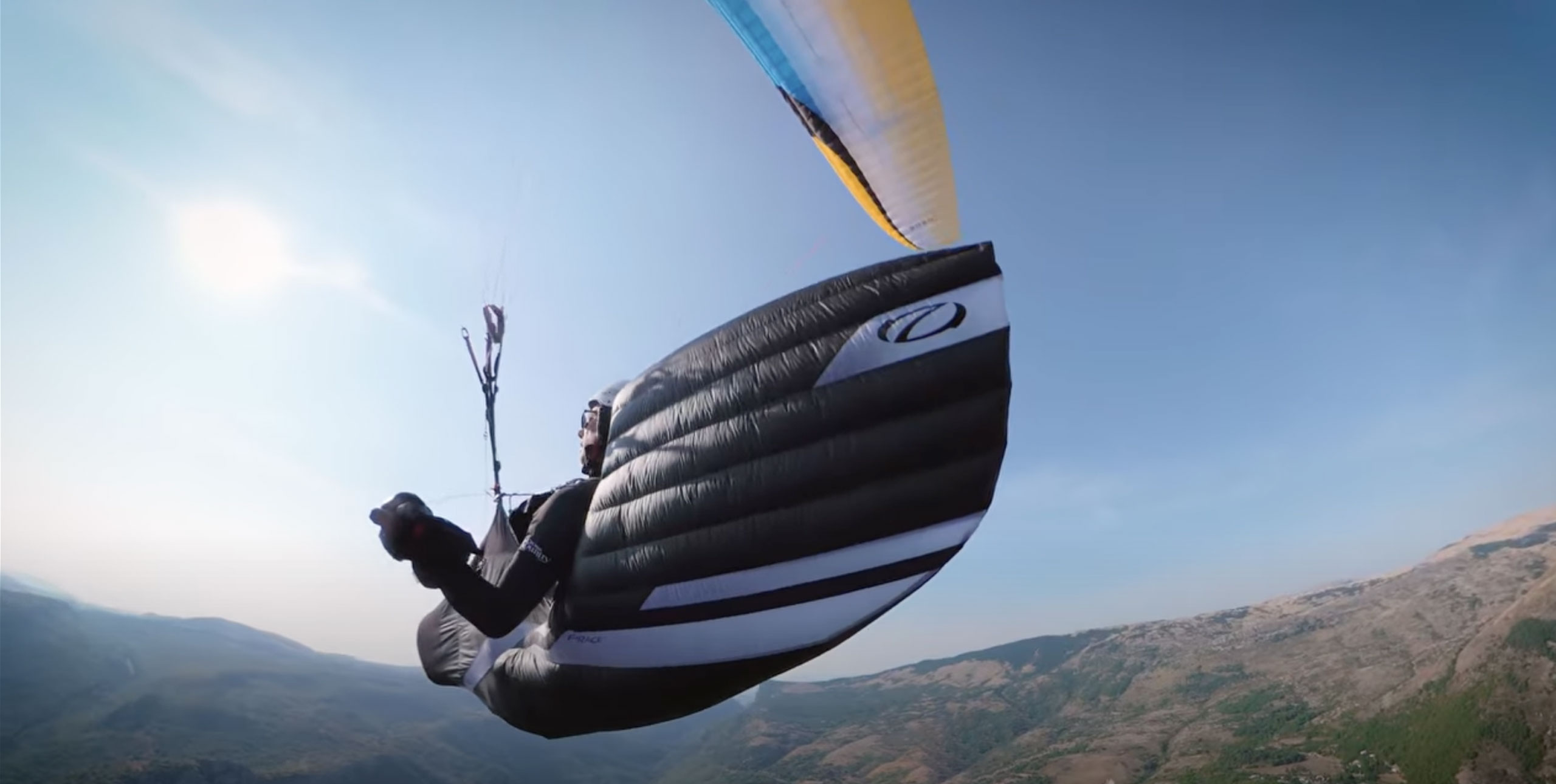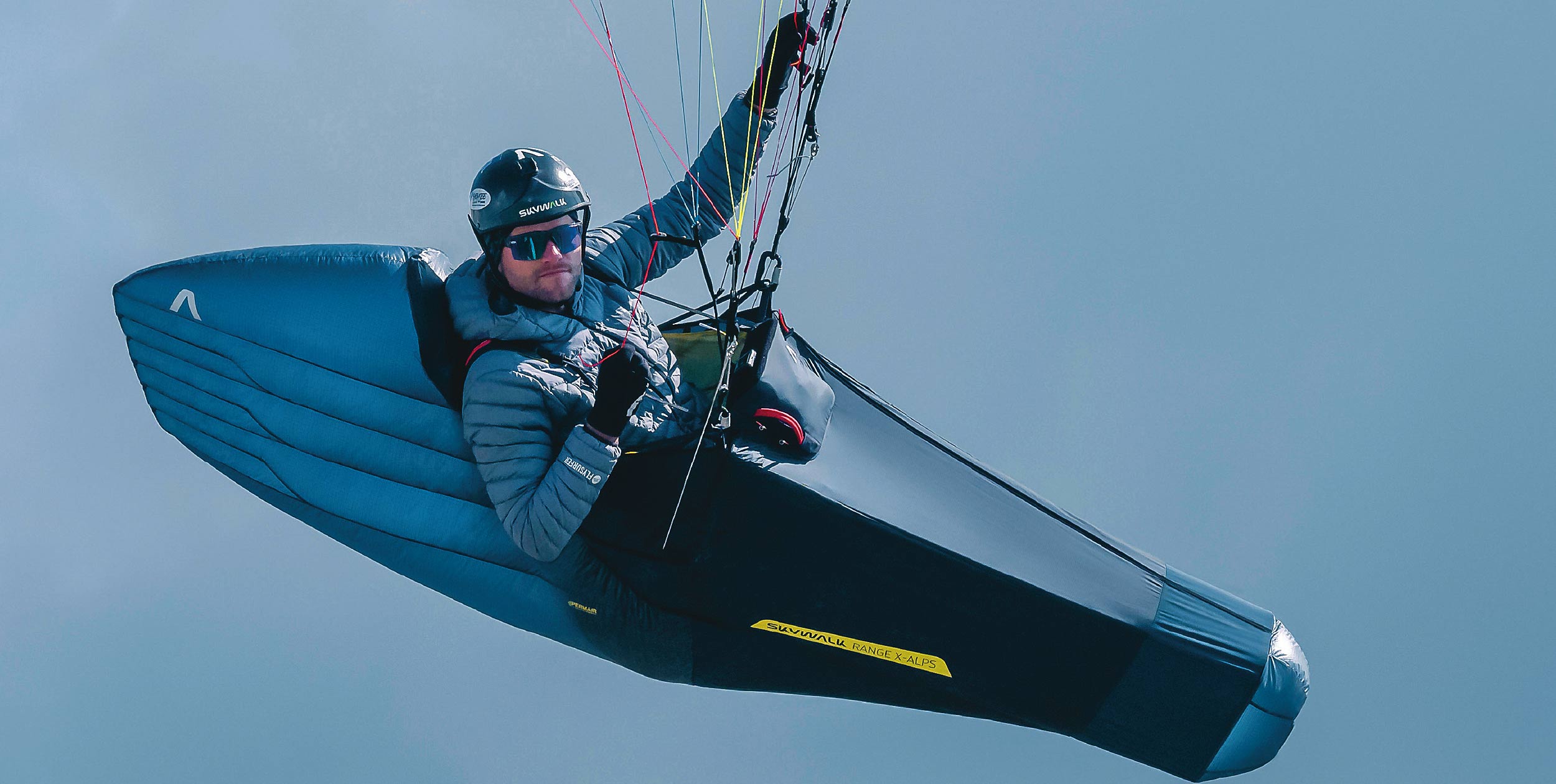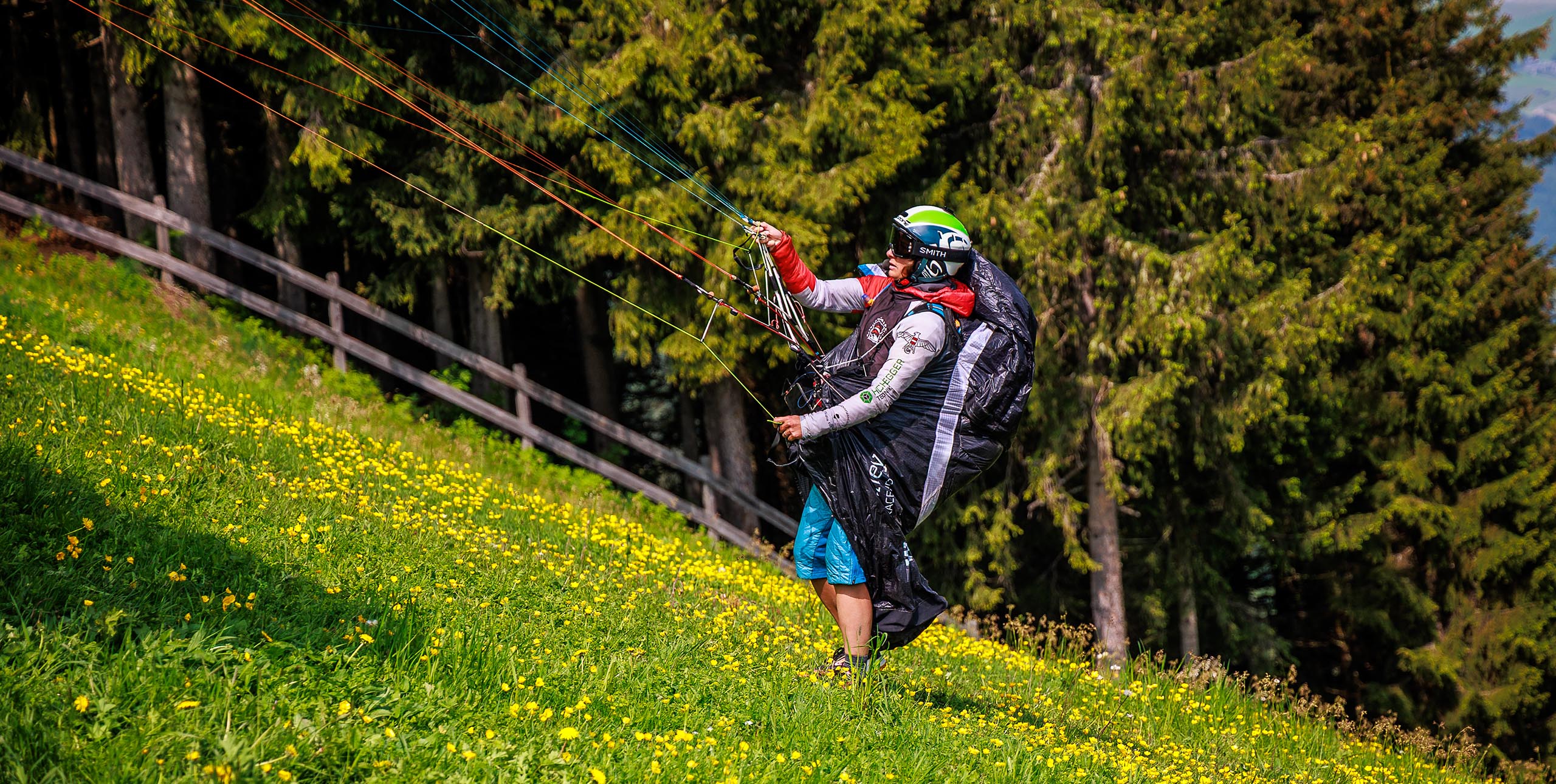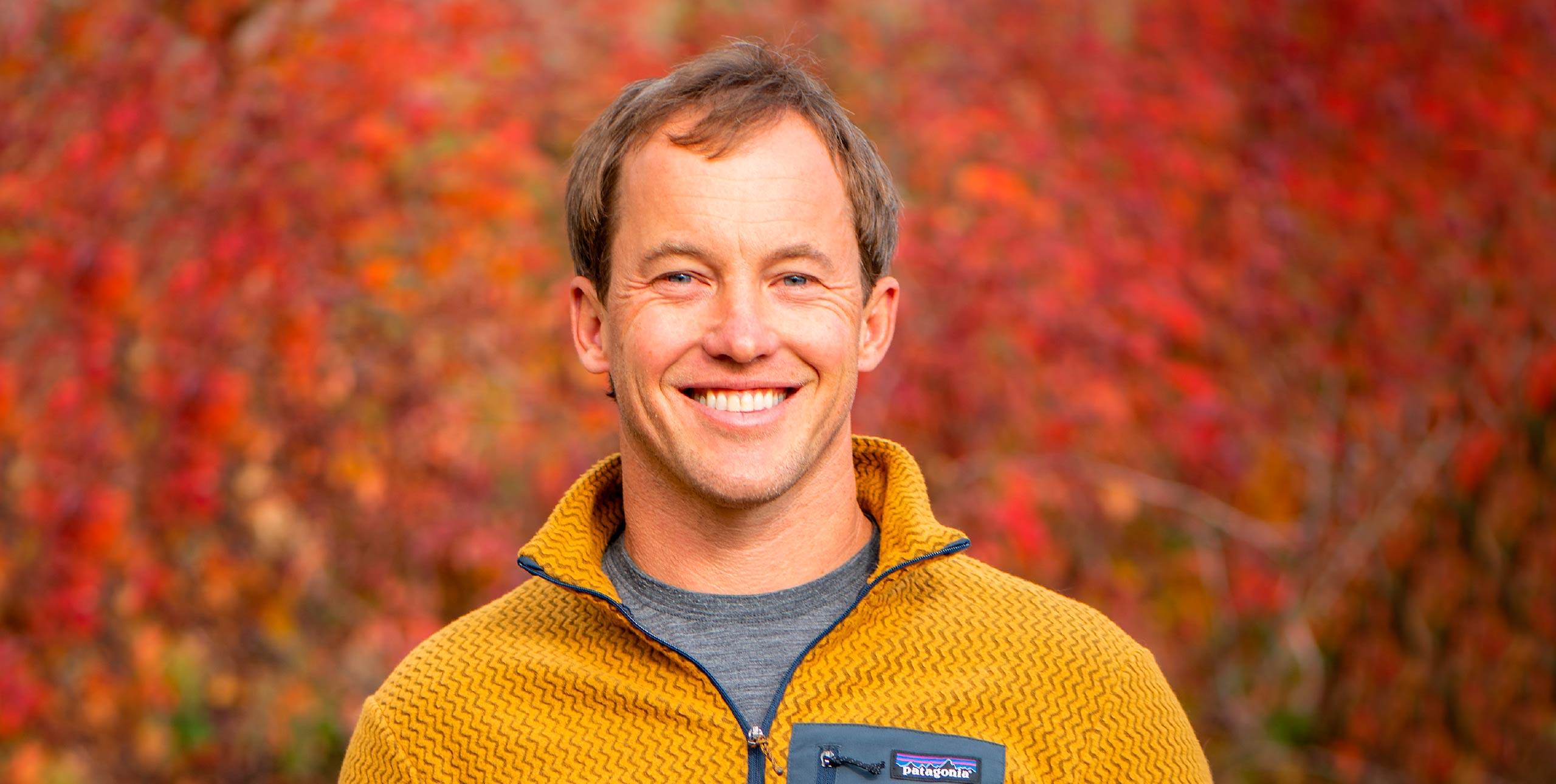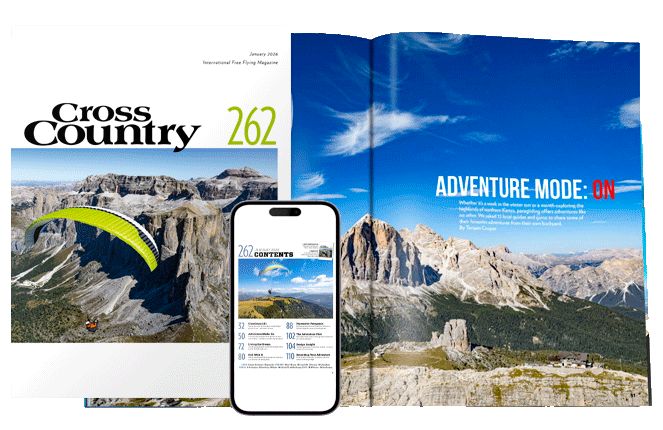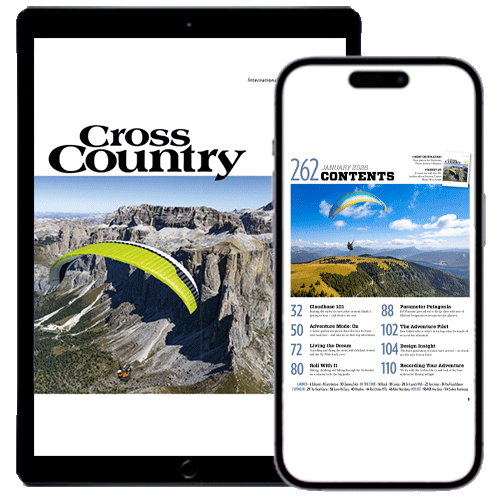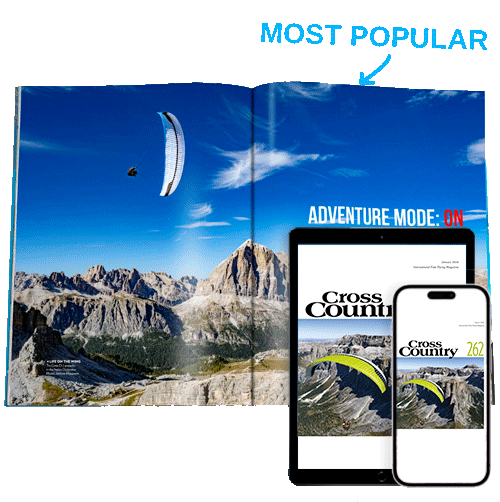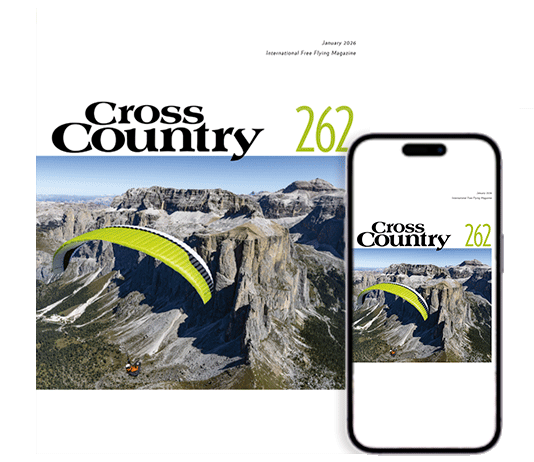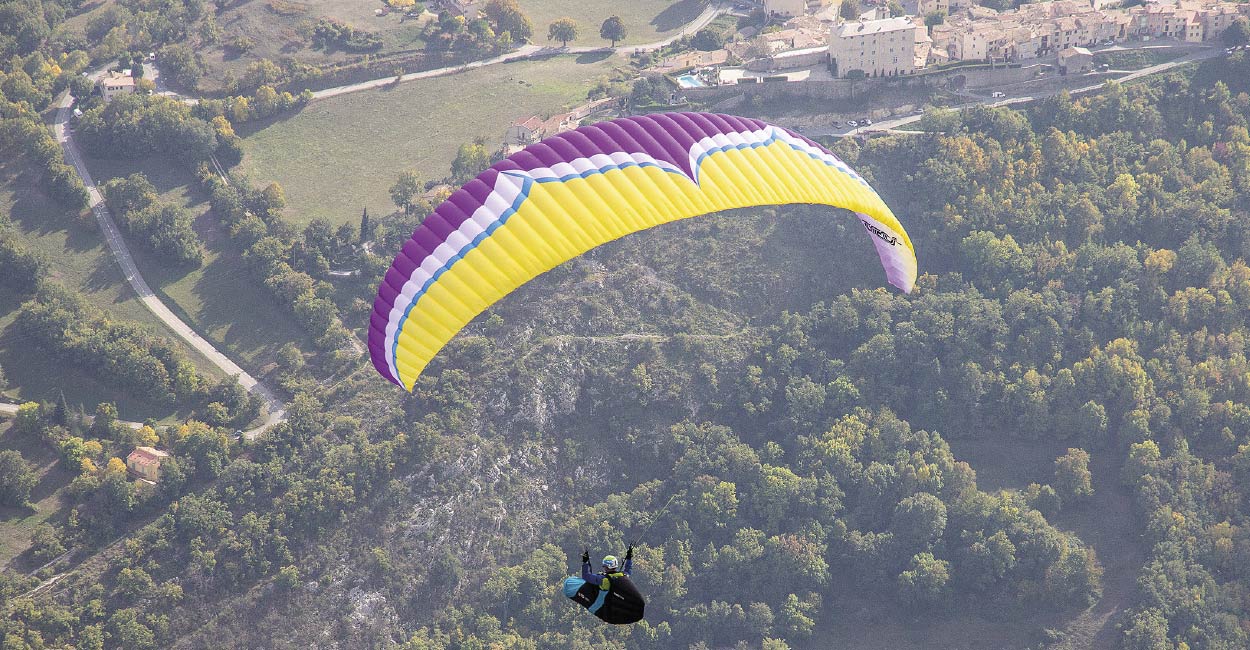
Marcus King flies the latest iteration of this classic lightweight wing
My local flying club in the south of France organised a three-day hike-and-fly race in September. It started and finished in Gourdon, with turnpoints at Digne-les-Bains and Colle Saint-Michel. The unique twist was you had to use the small train that runs from Nice to Digne at least once.
Ozone had just released the sixth iteration of their lightweight low-B wing, the Geo. It seemed obvious to combine the two and so, in a moment of madness, I signed up.
Looking at the glider specs I realised I sat right at the top of the MS and just below midway of the ML, so I wasn’t sure which size to take. Ozone test pilot Russell Ogden suggested the ML would be better for cross-country, but said I should also try the MS as it would be more dynamic, so I ended up with both sizes of glider.
Poor weather meant I didn’t actually get to fly either before the race, so I opted to fly the ML for the competition. However, with strong north winds forecast I wasn’t sure how much flying we would actually get.
On the day though, assembled at Gourdon, it seemed obvious that the first leg would be to reach the train station at La Manda in the Var Valley, reachable by flying along the front ridge. So, as the whistle went we all headed off to the nearest take-off above the village.
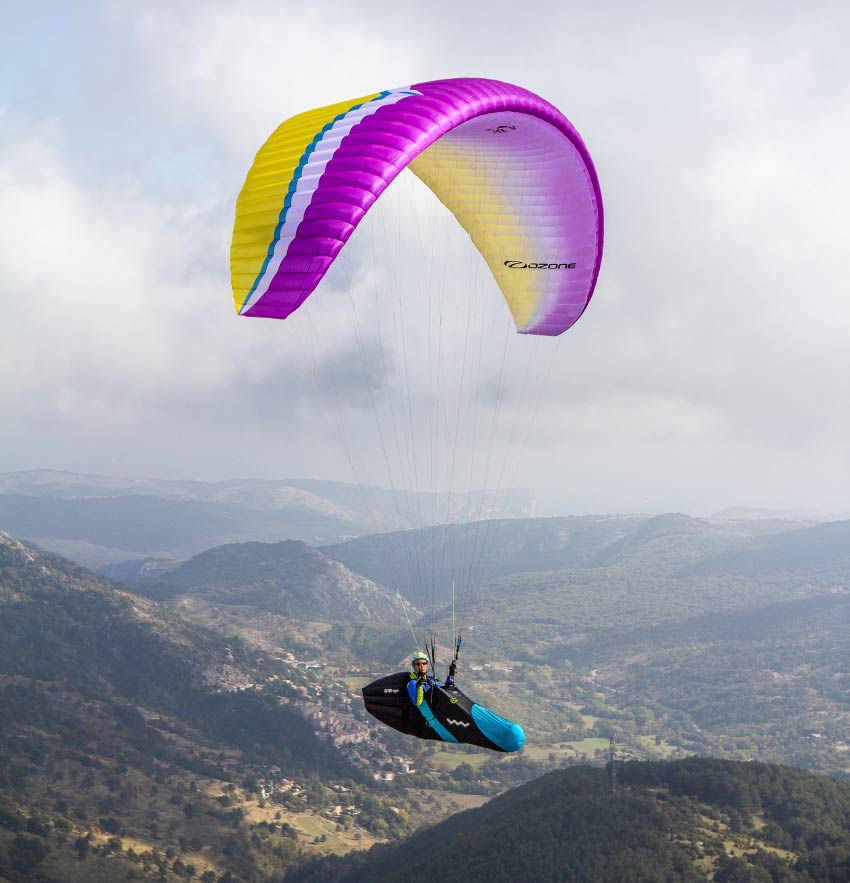
Construction
On launch I unrolled the wing for the first time. Based on the full-fat Buzz Z6 the wing has a fairly low aspect ratio of 5.16 – identical to that of Nova’s Ion 5 and a little lower than Supair’s Leaf 2 at 5.3.
There is of course a Shark Nose, which Ozone say they have optimised even further. And there are ‘G-strings’, small bits of tape that span the centre of the cell openings; we first saw this on the Rush 5 and it is designed to maintain a cleaner open shape when accelerated.
At the back the wing has mini-ribs to keep the trailing edge clean and tidy. Material is a mix of Dominico 20D and Porcher 27 Classic cloth, while the line-set – it’s a three-line wing with bifurcations on the back set to D-tabs – is pretty much unsheathed. Some of those lines are pretty thin, especially for this class of wing, but Ozone say overall it adds up to a 20% drag reduction compared with the previous model, the Geo 5.
I had the original Geo back in the day, a wing I took on a motorcycle adventure in the Himalaya. That wing had bootlace risers and seemed incredibly light at the time, but weighed 4.6kg in the M size. Despite all the tech and nine more cells the latest Geo weighs nearly a kilo less for the same size, and that’s with webbing risers that are easier to handle.
Other modern improvements include soft links connecting the lines to the risers, and split-As for easy big-ears. Metal brake pulleys are attached on thin Dyneema line, but I’m not really a fan of these on this level of wing as they make it much harder to untangle if you accidentally take-off with a brake twisted through itself. Of course you should pre-flight thoroughly but we all make mistakes. Do we need to reduce drag that much?
Finally, the wing is supplied with a lightweight rucksack and standard inner bag. As you would expect the finish is all high quality.
First flight
With the next train not for a few hours we had plenty of time to make the 20km flight. I didn’t want to go down on this route as landings are small and few and far between as the whole area is well populated.
Pulling up the wing it rose smoothly and not too quickly in the steady breeze. There was no snap as it came overhead and it needed very little control when above – all very easy. I pushed off into the air and joined the gliders that hadn’t already left on the valley crossing. Base was only 100m or so above the cliffs we were flying, so it wasn’t long before I was heading off on my first glide.
With half-bar applied the wing felt nice and taut with very little movement. It felt efficient, with no massive increase in sink-rate across the whole range and stayed solid even with the pulleys overlapped. I was happy to keep half-bar on as I skirted the hillside moving to the into-wind section.
Once around the corner I could thermal up to base again. The wing is very reassuring as you fly into lifting air, with no real pitching. The brakes give you good control, even though they have long travel: you only need use the first part to put the wing where you want it. The glider wants to turn pretty flat, and pulling more brake simply tightens the turn rather than banking it up.
Even flying lower in the weight range the wing wasn’t knocked back, but kept turning well. It may lack the driven feel of higher-class wings, but you won’t feel like you are being knocked out of the thermals. Sink rate was certainly good and I was quickly having to escape the clutches of the nearly 100% cloud cover.
After a quick spiral to escape the white room, I headed off with big ears pulled in and the speedbar applied. The big ears were easy to pull with the split-risers. Although not massive, you could always take an extra line if needed. Again, the wing felt very secure and planted with no flapping. Once I felt I was losing the cloud suck I released them and they rolled out easily on their own.
While some of the other competitors were forced to land high and walk up to re-launch, with my height I was able to make quick progress along the ridge. I only had to take one more climb to base and could then use lift to extend my glide as I made my way out into the Var valley, which is an industrial area. The air was pretty buoyant and the valley wind I had been concerned about hadn’t got going. I spiralled down to land on rough ground directly behind the train station, where some of the other competitors had already gathered.
Hiking on
From there it was on to the train to Digne, followed by a walk to the local site from where we hoped to fly back as far as we could towards Gourdon. On take-off it was pretty windy. Again, the Geo was well behaved, coming up easily but without overshooting. Some lightweight wings can be a bit of a handful in strong conditions, but the Geo was easy to manage every time I launched.
In the air it was soon obvious that we would have to push around a corner into wind. The higher-end wings squeezed round and were soon thermalling above the next col, but for the rest of us it proved more difficult. I tried several times to push around the corner, but found myself dropping into the lee of a ridge in front. The Geo stayed solid and gave me the confidence to try, but in the end it proved just too much for the performance level of the B wings on the hill and we all ended up back in Digne.
With strong northerlies and stable conditions for the next two days we were stuck with walking and the odd quick flight and no return to Gourdon.
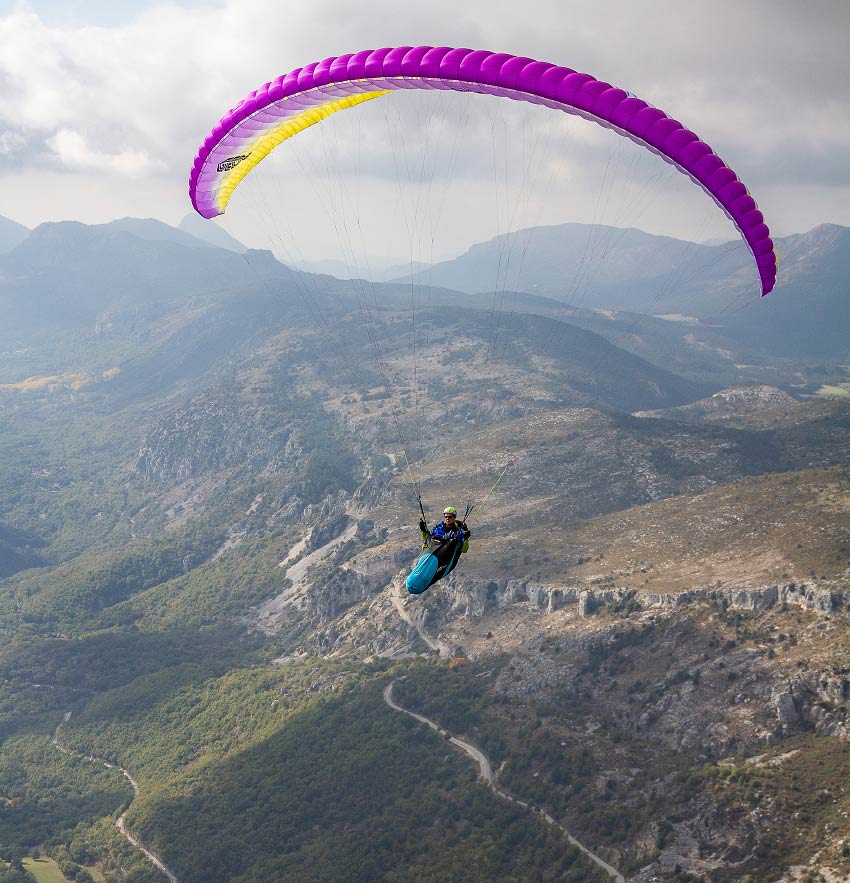
Further flying
After my weekend introduction to the wing I got some further flights on the Geo 6 at my local site. The north wind stuck around, but Gréolières is protected and influenced by a southerly valley breeze. This creates a protected, flyable zone, but it also means if you climb too high you will often find yourself in mixing air if the true meteo wind is from the north. There is also often a lot of convergence where different valley winds meet.
It makes for a good site to test the passive safety of a wing, and the Geo passed with flying colours. On one particularly spicy day I did get the odd wingtip rustle, but the main part of the wing was nice and solid.
I tried pulling a few collapses. There is quite a bit of pressure to pull against, so it took quite a quick and strong pull to collapse it correctly. The collapsed wing remained very easy to control and, left to its own devices, there was very little change of course and a very moderate dive; very reassuring.
I took the MS size out for a flight on a similar day. Although it was more dynamic in its behaviour I didn’t find it any more demanding to fly. The brake travel is still long, so you can pull quite deep.
Sink rate was still good and I was able to climb easily with just a bit more authority in the strong cores. Both sizes turn nicely in thermals, although I did feel a bit more solidity in the tips on the smaller model, as you’d expect with the increased loading.
My feel is the glider is probably best flown in the upper half of the weight range, but you don’t need to be right at the top for strong conditions. It’s still efficient right at the top of the range, which is good if you are carrying extra weight, for example bivvy kit.
Conclusion
The Geo is yet another superbly finished wing from the team at Ozone that fits its design targets. It has heaps of performance for days out flying in the mountains and it’s a very capable cross-country machine. Its low weight makes it a perfect travel wing when paired with a light harness.
It is a great choice for multi-day hike-and-fly adventures, where its performance combined with easy flight characteristics mean that, whatever your experience level, you’ll be able to concentrate on the route and the conditions rather than handling the glider. You’ll be free to explore, fly new sites, take in the views and enjoy the experience. And after all, isn’t that why we do these things?
GLIDER SPECIFICATIONS
Ozone say: “Lighter, higher performance, and more fun than ever!”
Use: Soaring, XC, hike-and-fly and travel
Pilot level: Intermediate
Sizes: XS, S, MS, ML, L
Flat area (m2): 22.2, 24.1, 25.8, 27.3, 29
Certified take-off weight (kg): 55-70, 65-85, 75-95, 85-105, 95-115
Recommended take-off weight (kg): 60-70, 70-84, 82-94, 90-104, 100-114
Glider weight (kg): 3.26, 3.49, 3.67, 3.85, 4.1
Cells: 48
Flat aspect ratio: 5.16
Certification: LTF / EN B
The Ferrovi’AIR was a two-day hike-and-fly race held in the south of France, in September 2019. Pilots had to get from Gourdon to Digne – by foot, flying… and le train des Pignes! Our reviewer Marcus King took part using an Ozone Geo 6
Published in Cross Country Issue 206 (Dec 2019 / Jan 2020)


